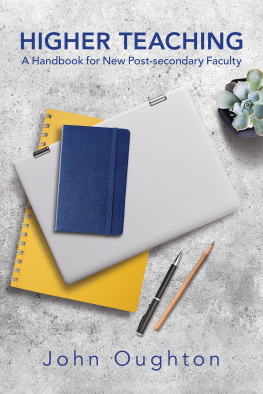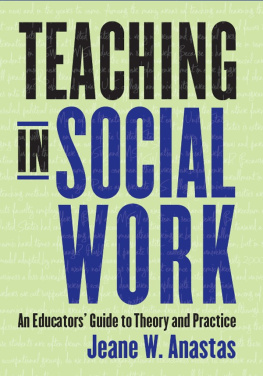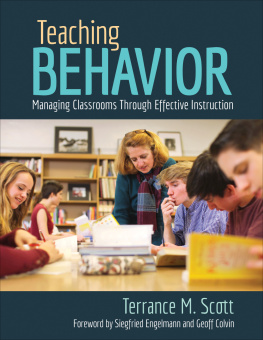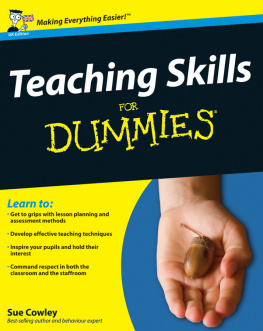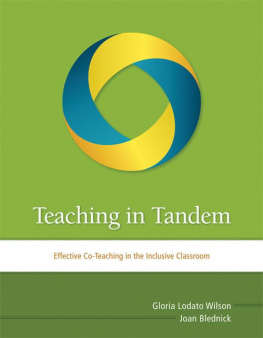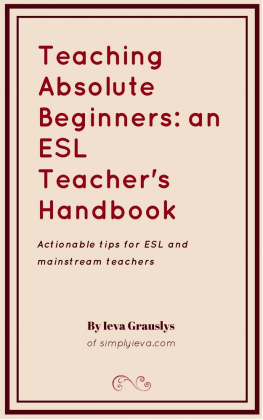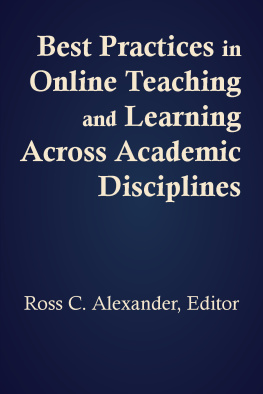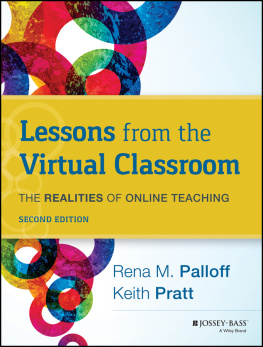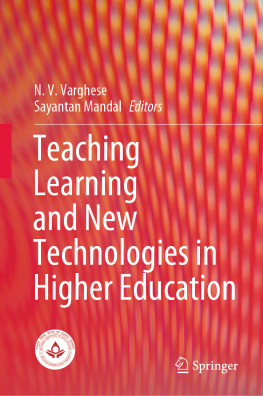
HIGHER TEACHING
A Handbook for New Post-secondary Faculty

MIROLAND IMPRINT 29



Guernica Editions Inc. acknowledges the support of the Canada Council for the Arts and the Ontario Arts Council. The Ontario Arts Council is an agency of the Government of Ontario.
We acknowledge the financial support of the Government of Canada.

Copyright 2021, John Oughton and Guernica Editions Inc.
All rights reserved. The use of any part of this publication,
reproduced, transmitted in any form or by any means,
electronic, mechanical, photocopying, recording
or otherwise stored in a retrieval system, without the prior consent
of the publisher is an infringement of the copyright law.
Connie McParland, series editor
Michael Mirolla, editor
David Moratto, cover and interior designer
Guernica Editions Inc.
287 Templemead Drive, Hamilton, ON L8W 2W4
2250 Military Road, Tonawanda, N.Y. 14150-6000 U.S.A.
www.guernicaeditions.com
Distributors:
Independent Publishers Group (IPG)
600 North Pulaski Road, Chicago IL 60624
University of Toronto Press Distribution,
5201 Dufferin Street, Toronto (ON), Canada M3H 5T8
Gazelle Book Services, White Cross Mills
High Town, Lancaster LA1 4XS U.K.
First edition.
Printed in Canada.
Legal Deposit-First Quarter
Library of Congress Catalog Card Number: 2020947921
Library and Archives Canada Cataloguing in Publication
Title: Higher teaching / John Oughton.
Names: Oughton, John, author.
Description: First edition.
Identifiers: Canadiana 20200368796 | ISBN 9781771835954 (softcover)
Subjects: LCSH: First year teachers. | LCSH: Effective teaching.
Classification: LCC LB2844.1.N4 O94 2021 | DDC 371.102-dc23
To Dr. Francine Jennings,
an inspired teacher of teachers
CONTENTS


YOU'RE READING THIS because you are a new teacher, are considering becoming one, or you work with new teachers. You may want to give back to the community, profession or school that helped you, or prepare students to master the job you love. You may be dipping a toe into educational waters with the thought of changing jobs to teaching full-time.
This is the book I needed when I started teaching: a practical primer on the essentials. There are many books about education, but most focus on one or two of the topics that this book addresses. It gives you what you need to start your new job on the right foot. Much of teaching has to be learned by doing, but thats no different than any other profession.
Here you will find only the theory you need to understand current trends in post-secondary teaching. To make this as easy to read as possible, I have minimized direct quotations and citations. However, I would not have improved as a teacher without reading, viewing and discussing others theories and strategies. When youre ready to explore these issues in more detail, consult the reference list is at the end.
How did I become a teacher? Both my parents were the only children in their working-class families to go to university. My father became a zoology professor, my mother a university librarian. Like all my siblings, I completed university degrees. Education and research were in my blood. However, I did not originally see myself as a teacher. The formal instruction I experienced in public and high school in Guelph, Ontario was uneven. I was not sure I would be good at it myself. When my high school guidance teacher looked at my SAT scores for reading and writing, he said, You should consider becoming a English teacher. Sorry to say, I laughed, because he was a nice man, and in the long term was right. But at the time, I thought I would become a writer. Thats if my career as a racing driver didnt turn out.
My friend and fellow poet Ken Sherman suggested I try teaching at a community college, as he did. You just do your classes and they leave you alone otherwise. You can write poetry when youre not teaching, he explained. I jumped at the idea, and began my first class not knowing what I was doing. Community college teachers usually have no formal education in teaching, but receive some orientation when they start.
I was pretty terrible, but by observing student reactions, and badgering more experienced professors for tips, I slowly improved. I realized what a privilege this job is. I could support, influence, and sometimes inspire a couple of hundred people every year. Occasionally, my comments made a positive difference in a students life. I turned one into a reader, and another into a journalism student. There are many sayings about the value of teachers work, but one I identify with is, When you cast a stone into a pond, you never know where the ripples end.
I took doctoral courses in education to gain some grounding for my choices and strategies. Then I became a full-time English teacher at Centennial College, a large and very diverse community college in Toronto. When the opportunity came to be seconded into a faculty development position, I applied. Soon I was giving workshops, consulting with other faculty members, and learning about teaching not just English, but everything, so I could be helpful in my new role.
Through talking with teachers in every discipline from fine arts to aircraft maintenance, I began to understand the commonalities and differences in college teaching. I also saw where curriculum originated, what influenced it, and how a badly-designed course could be distinguished from a well-conceived one. As the department grew, becoming the Center for Organizational Learning and Teaching, I continued in my role. I collaborated with other talented and experienced teachers who worked in faculty and curriculum development, led orientation for new full-time and contract teachers for several years, and helped with program review and quality assurance.
My notions of good teaching changed. I realized that presenting new information in a lively and clear way is only half the job. Everyone who knows a field well can talk about it. Teachers must close the loop by finding out what students have retained, and what they can do with it. When the results of teaching are insufficient, one needs better strategies or materials. Teaching is therefore a distinct skill set, which requires close attention to student reactions and work, thinking on your feet, and willingness to try new approaches until something works. It takes patience, perseverance, and the desire to see every student do well, or at least do his or her best. Also, a good teacher is always ready to learn. Each term offers new students; each year brings new technologies, curriculum, and many other demands.
Next page
